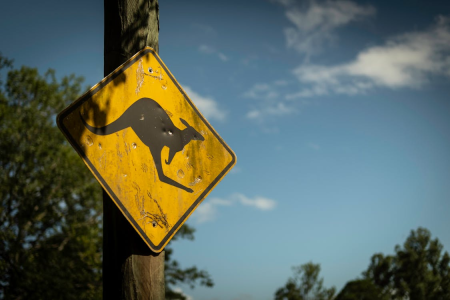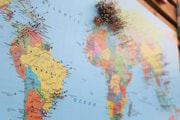Country roads aren’t what they were—and it’s the roos causing it
By
Maan
- Replies 0
Wildlife encounters on Aussie roads are nothing new—but a recent surge in a particular kind of incident has raised eyebrows among safety experts.
What began as an unusual uptick in one part of the country has now become a worrying trend across an entire state.
Authorities are sounding the alarm, warning drivers to stay alert as these unpredictable moments can have devastating consequences.
Drivers in South Australia were urged to stay alert after a sharp rise in road collisions involving one of the country's most iconic—and unpredictable—animals.
What appeared to be isolated incidents quickly snowballed into a worrying trend, with the RAA reporting more than 2,100 insurance claims related to kangaroo crashes over the past year alone. That figure represented a staggering 44 per cent increase compared to just two years ago.
The spike was believed to be linked to the state's prolonged dry conditions, which had been forcing kangaroos closer to populated areas and roadways in search of food.
Recent photos shared online showed large groups of kangaroos gathered on a stretch of road between Sedan and Swan Reach, about 130 kilometres northeast of Adelaide.
Charles Mountain, RAA’s Senior Manager for Safety and Infrastructure, said motorists should not underestimate how suddenly these animals can appear.
‘There is a clear trend that kangaroo collisions are increasing across the state as more animals come towards busy roads in search of food,’ he said. ‘Kangaroos in particular are unpredictable creatures that can seemingly come out of nowhere and pose a significant safety risk.’
The RAA identified several crash hotspots based on three years of insurance data, with Mount Gambier at the top of the list, followed by Whyalla, Port Augusta and Mount Compass. While most incidents—around 77 per cent—occurred in regional areas, there was also a noticeable number reported in outer metropolitan zones, making it clear that no area was immune.
Adding to the urgency of the situation was a deeply confronting video released by wildlife charity Southern Koala and Echidna Rescue. The footage, filmed on a South Australian roadside, showed a kangaroo left paralysed and unable to move apart from its head after being struck by a vehicle.
The video, shared via social media, was meant to highlight the real-world consequences of careless driving.
Source: Instagram/southernkoalaechidnarescue
‘This video shows how stressful fast cars are for this poor roo that was hit and left badly injured. Our team took this footage while waiting for further assistance to arrive,’ the group wrote.
Mish from the same organisation appealed to drivers across Australia to take responsibility if they hit or spot injured animals.
‘If your vehicle makes contact with an animal, please call local wildlife groups, even if the animal hops away or climbs a tree,’ she said in an interview.
Meanwhile, a driving school in South Australia shared dashcam footage from inside a truck to educate motorists on best practices. The video featured a trainee truck driver forced to make a quick decision as three kangaroos darted onto the road.
She avoided swerving—an action that may have saved lives but tragically led to the death of two joeys.
Michael Matta, business director and lead trainer at the school, called the experience ‘heartbreaking’, but reiterated that staying straight was the safest course.
‘It’s very bad to hit animals. Some of our drivers pull over and call wildlife services...but sometimes it’s not practical or safe to stop,’ he said.
The RAA reminded drivers that while kangaroo collisions typically peak during autumn and spring, drier-than-usual weather had been disrupting those seasonal patterns. They urged drivers not to swerve, to brake safely, and to use their horn if needed.
And with the numbers climbing and heart-wrenching scenes circulating online, the message was clear—this was a problem that wasn’t going away anytime soon.
If you’ve ever driven through roo country, you know how fast these moments can happen—often with no time to react.
To see just how quickly things can turn, watch this jaw-dropping clip for yourself.
Source: Youtube/Dash Cam Owners Australia

With so many of us having travelled these country roads over the decades, have you ever had a close call with wildlife behind the wheel? Let us know your thoughts in the comments.
In regional Australia, wildlife encounters aren't just happening on the roads—they're happening right in our backyards too.
For seniors who’ve spent a lifetime appreciating the bush and its creatures, knowing when to step in can be a matter of heart and principle.
One woman recently made headlines for halting demolition works…all for a scaly little mate she refused to leave behind.
Read more: Would you hold up demolition for a reptile mate? This woman did!
What began as an unusual uptick in one part of the country has now become a worrying trend across an entire state.
Authorities are sounding the alarm, warning drivers to stay alert as these unpredictable moments can have devastating consequences.
Drivers in South Australia were urged to stay alert after a sharp rise in road collisions involving one of the country's most iconic—and unpredictable—animals.
What appeared to be isolated incidents quickly snowballed into a worrying trend, with the RAA reporting more than 2,100 insurance claims related to kangaroo crashes over the past year alone. That figure represented a staggering 44 per cent increase compared to just two years ago.
The spike was believed to be linked to the state's prolonged dry conditions, which had been forcing kangaroos closer to populated areas and roadways in search of food.
Recent photos shared online showed large groups of kangaroos gathered on a stretch of road between Sedan and Swan Reach, about 130 kilometres northeast of Adelaide.
Charles Mountain, RAA’s Senior Manager for Safety and Infrastructure, said motorists should not underestimate how suddenly these animals can appear.
‘There is a clear trend that kangaroo collisions are increasing across the state as more animals come towards busy roads in search of food,’ he said. ‘Kangaroos in particular are unpredictable creatures that can seemingly come out of nowhere and pose a significant safety risk.’
The RAA identified several crash hotspots based on three years of insurance data, with Mount Gambier at the top of the list, followed by Whyalla, Port Augusta and Mount Compass. While most incidents—around 77 per cent—occurred in regional areas, there was also a noticeable number reported in outer metropolitan zones, making it clear that no area was immune.
Adding to the urgency of the situation was a deeply confronting video released by wildlife charity Southern Koala and Echidna Rescue. The footage, filmed on a South Australian roadside, showed a kangaroo left paralysed and unable to move apart from its head after being struck by a vehicle.
The video, shared via social media, was meant to highlight the real-world consequences of careless driving.
Source: Instagram/southernkoalaechidnarescue
‘This video shows how stressful fast cars are for this poor roo that was hit and left badly injured. Our team took this footage while waiting for further assistance to arrive,’ the group wrote.
Mish from the same organisation appealed to drivers across Australia to take responsibility if they hit or spot injured animals.
‘If your vehicle makes contact with an animal, please call local wildlife groups, even if the animal hops away or climbs a tree,’ she said in an interview.
Meanwhile, a driving school in South Australia shared dashcam footage from inside a truck to educate motorists on best practices. The video featured a trainee truck driver forced to make a quick decision as three kangaroos darted onto the road.
She avoided swerving—an action that may have saved lives but tragically led to the death of two joeys.
Michael Matta, business director and lead trainer at the school, called the experience ‘heartbreaking’, but reiterated that staying straight was the safest course.
‘It’s very bad to hit animals. Some of our drivers pull over and call wildlife services...but sometimes it’s not practical or safe to stop,’ he said.
The RAA reminded drivers that while kangaroo collisions typically peak during autumn and spring, drier-than-usual weather had been disrupting those seasonal patterns. They urged drivers not to swerve, to brake safely, and to use their horn if needed.
And with the numbers climbing and heart-wrenching scenes circulating online, the message was clear—this was a problem that wasn’t going away anytime soon.
If you’ve ever driven through roo country, you know how fast these moments can happen—often with no time to react.
To see just how quickly things can turn, watch this jaw-dropping clip for yourself.
Source: Youtube/Dash Cam Owners Australia
Key Takeaways
- Kangaroo-related crashes in South Australia surged by 44 per cent, with over 2,100 incidents reported in the past year.
- Dry weather pushed kangaroos closer to roads, increasing collision risks across both regional and outer metro areas.
- Disturbing footage of injured kangaroos has prompted calls for driver accountability and wildlife rescue awareness.
- Experts urged drivers to avoid swerving, brake safely, and stay alert as seasonal patterns shift.
With so many of us having travelled these country roads over the decades, have you ever had a close call with wildlife behind the wheel? Let us know your thoughts in the comments.
In regional Australia, wildlife encounters aren't just happening on the roads—they're happening right in our backyards too.
For seniors who’ve spent a lifetime appreciating the bush and its creatures, knowing when to step in can be a matter of heart and principle.
One woman recently made headlines for halting demolition works…all for a scaly little mate she refused to leave behind.
Read more: Would you hold up demolition for a reptile mate? This woman did!








